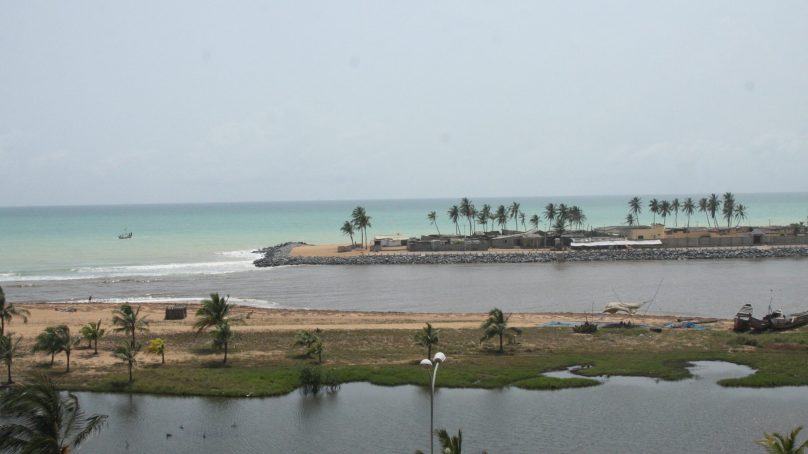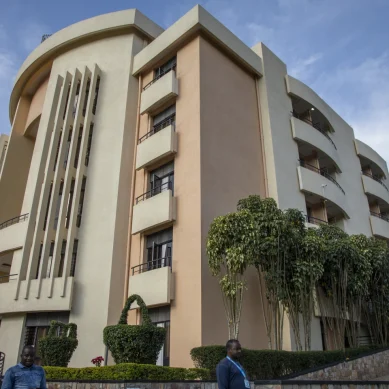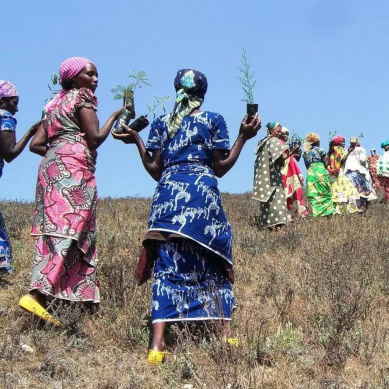
African countries where large proportions of the population live on the coast – such as Senegal (41 per cent), Benin (35 per cent) and Liberia (29 per cent) – face the highest risk oof being submerged by sea level rise.
Without adaptation, damages from sea level rise and extreme sea level events to 12 major African coastal cities, under medium and high emissions scenarios, are projected to be between $65 billion and $86.5 billion by 2050. If low-probability, high-damage events are factored in, those costs double.
Alexandria is just one of several low-lying, densely packed coastal cities in the Nile Delta at serious risk of becoming submerged in the next three decades. The Nile Delta (excluding Cairo) is home to 59 million people or 57 per cent of Egypt’s population. The lifeblood of the country, the region contains more than 60 per cent of Egypt’s agricultural lands and fisheries production.
A vulnerability assessment of the cities of Alexandria, Rasheed (Rosetta) and Port Said found that the likely sea-level rise of 0.5 million could see more than two million people abandoning their homes, 214,000 jobs lost, and over $35 billion lost in property value and tourism income by 2050. Not included was the loss of the globally renowned historic, cultural, and archaeological sites, nor the food insecurity threatened by the loss of agricultural land.
If sea levels rise to one metre m, Alexandria alone is expected to experience $50 billion in damages. In addition, some six million coastal inhabitants from the Delta will likely relocate inland to Greater Cairo, an already heavily populated metropolis of about 21 million, that also happens to be vulnerable to flooding.
Without proper planning, such massive relocation could lead to a cascade of crises befalling one of Africa’s largest cities.
Home to more than 20 million people and expected to be the world’s largest city by the end of the century, Lagos, a low-lying city on Nigeria’s Atlantic coast, also experiences the triple impact of perennial fluvial (river), pluvial (rainfall), and coastal flooding.
Adding up the damages to assets, economic production, and mortality, the World Bank found the total cost of just fluvial and pluvial flooding in Lagos is $4 billion annually. Rising sea levels combined with high urbanisation will exacerbate future damage.
By some estimates, at the 3°C global warming scenario, a third of Lagos’s population will be displaced by the sea.
According to the World Bank, $39 billion worth of economic assets are vulnerable to flooding in the Dakar region. Further north, St Louis, Senegal, founded in 1659 is disappearing under the rising sea. Many residents have been displaced.
The city is a particularly acute example of problems common across several coastal metropolises in West Africa, from Ivory Coast’s economic hub Abidjan to Guinea’s capital Conakry. Major economic assets including Abidjan’s port, which is the largest in Côte d’Ivoire, and much of the international airport are on land less than 1 m above sea level.
From the central Mozambican city of Beira, which was hit by the costliest African cyclone on record in 2019, to the connected cities of Maputo and Matola in southern Mozambique, some three million people are increasingly exposed to rising sea levels. Mozambique’s coastal cities, moreover, are situated in a widening and intensifying cyclone path due to warmer sea surface temperatures.
Africa’s coastal cities are facing converging crises – rising seas, rapidly growing populations, land pressure, and an affordable housing shortage. These crises are compounding one another as people are pushed to settle farther into the wetlands and shorelines surrounding cities, exposing these settlements to storm surges and flooding while weakening the protection these natural barriers and ecosystems provide the entire city.
Mitigating the effects of rising seas, therefore, will require simultaneously addressing other sources of vulnerability (such as balancing between high-end developments that displace residents and affordable housing options).
Africa’s coastal cities are facing converging crises – rising seas, rapidly growing populations, land pressure, and an affordable housing shortage.
The Global Centre on Adaptation has implemented rapid climate risk assessments (RCRA) in five cities, including the coastal cities of Bizerte (Tunisia), Conakry (Guinea) and Libreville (Gabon). Some of the most cost-effective measures for reducing loss and damages from extreme weather events generated from these RCRA’s include investing in water and sanitation infrastructure, restoring wetlands and ecosystems to reduce flood risks and strengthening disaster evacuation planning.
The RCRA process revealed that strong local champions within municipalities were instrumental in identifying climate risks, generating data, and developing realistic solutions.
Instead of investing in expensive and maintenance-heavy infrastructure projects to defend against storm surges, many African coastal cities might choose the nature-based solution of restoring mangroves, dunes, seagrasses, wetlands, and other costal ecosystems. Even New York City abandoned its plans for an expensive seawall to invest instead in enlarging barrier islands (“living shorelines”).
One such “green infrastructure” initiative is the Management of Mangrove Forests from Senegal to Benin, which aims to protect fragile mangrove ecosystems and sustainable riparian economies as a means to enhance resilience to climate change. Another, the West Africa Coastal Areas Management Program is a public-private partnership intended to strengthen integrated local, national, and regional coastal management strategies across 17 West African countries.
In Quelimane, Mozambique, the Coastal City Adaptation Project began restoring a protective layer of mangroves in 2015. These investments, accompanied by education among local communities on the importance of mangroves, paid off when Cyclone Idai hit in 2019.
According to the mayor of Quelimane, Manuel de Araújo, “Ultimately, it’s our mangroves that saved us. They are our first line of defence. The day we don’t have mangroves, I don’t think our city will survive.”
There is no single silver bullet to address sea level rise. Layered and mutually reinforcing policy responses are needed. These must be focused on fundamental questions about whom cities are for and whom they prioritize as they grow and adapt. By balancing ecological, economic, and political strategies, municipal and national leaders can strengthen the resiliency of Africa’s coastal cities as they adapt to the threat posed by rising sea levels.
- A Tell / African Centre for Strategic Studies report











